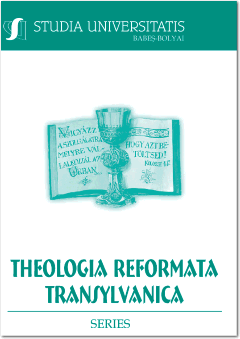HOGYAN KERÜLTEK KALOTASZEGI VARROTTASOK A KIRÁLYLÁNY KELENGYÉJÉBE?
WHY ARE THERE TRADITIONAL EMBROIDERIES FROM CĂLATA REGION (KALOTASZEG) IN THE DOWRY OF A PRINCESS?
Author(s): Sarolta PüsökSubject(s): Christian Theology and Religion, Theology and Religion, Islam studies, Comparative Studies of Religion, Religion and science , Biblical studies, Sociology of Religion, History of Religion
Published by: Studia Universitatis Babes-Bolyai
Keywords: protestant sense of mission; manses and culture/civilization; Gyarmathy Zsigáné; embroideries from Călata region (Kalotaszeg); home-industry;
Summary/Abstract: The study has three major units:A) Protestantism and social engagement. In the Hungarian Protestantism it is common and a tradition to be socially engaged. One can’t be indifferent in the case of social issues, but has to declare God’s glory in the world through having a responsible approach to their community in social, economic and cultural respects.B) The culture-historical role of pastor’s families. The walls of a manse are made of glass – as the Hungarian saying says the life of the pastor and their family has always been interesting to the outer world. After the period of illuminism, but more in the 19th century the residents of the manse consciously assumed the role of being an example. They readily undertook the duty of social organisation, the one of spreading culture, and educating the people.C) The exemplary voluntary work of Gyarmathy Zsigáné. The lady presented in the study was born in the middle of the 19th century as a pastor’s daughter, with her husband they have coordinated and made a considerable contribution to the cultural, social life of Călata (Kalotaszeg) region in Transylvania. She took the beautiful handmade embroideries sewed by the countrywomen to world fairs, and promoted this kind of traditional craft through her assiduous publicistic work. She formed friendships with painters, ethnographers, fashion designers, won the support of noble women from around Europe, using her network she popularized the embroideries, so they reached America, queens in European royal courts, Parisian, Viennese salons. With her writings she aided the picturesque but dismally poor region with waking demand for the embroideries, so opening the door to home-industry, which was almost life-saver for the country-folk. This helped not only to lessen the economic hardship, but also to save the values of folk art from sinking into oblivion, this way the techniques and the pristine patterns have been passed on to the coming generations and they can still be admired as a decoration of many reformed churches in Călata region (Kalotaszeg).
Journal: Studia Universitatis Babeș - Bolyai Theologia Reformata Transylvanica
- Issue Year: 64/2019
- Issue No: 1
- Page Range: 289-311
- Page Count: 23
- Language: Hungarian

